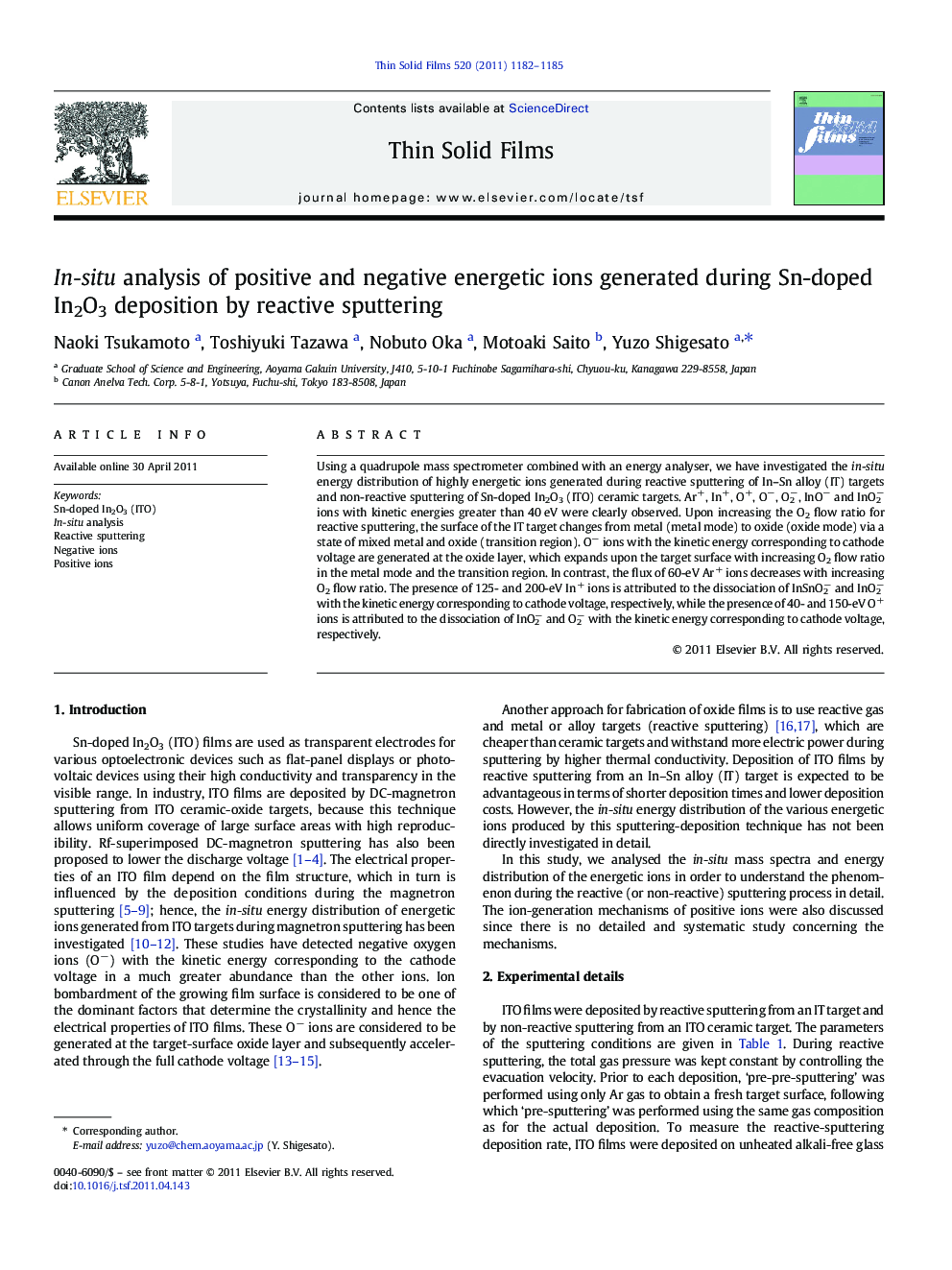| Article ID | Journal | Published Year | Pages | File Type |
|---|---|---|---|---|
| 1667575 | Thin Solid Films | 2011 | 4 Pages |
Using a quadrupole mass spectrometer combined with an energy analyser, we have investigated the in-situ energy distribution of highly energetic ions generated during reactive sputtering of In–Sn alloy (IT) targets and non-reactive sputtering of Sn-doped In2O3 (ITO) ceramic targets. Ar+, In+, O+, O−, O2−, InO− and InO2− ions with kinetic energies greater than 40 eV were clearly observed. Upon increasing the O2 flow ratio for reactive sputtering, the surface of the IT target changes from metal (metal mode) to oxide (oxide mode) via a state of mixed metal and oxide (transition region). O− ions with the kinetic energy corresponding to cathode voltage are generated at the oxide layer, which expands upon the target surface with increasing O2 flow ratio in the metal mode and the transition region. In contrast, the flux of 60-eV Ar+ ions decreases with increasing O2 flow ratio. The presence of 125- and 200-eV In+ ions is attributed to the dissociation of InSnO2− and InO2− with the kinetic energy corresponding to cathode voltage, respectively, while the presence of 40- and 150-eV O+ ions is attributed to the dissociation of InO2− and O2− with the kinetic energy corresponding to cathode voltage, respectively.
